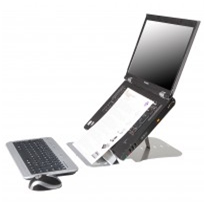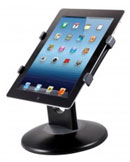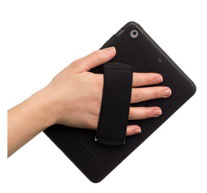 Mobile & Homeworking DSE Assessment
Mobile & Homeworking DSE Assessment
A mobile & homeworking DSE Assessment is required if you are working some of your time away from an ‘office’ location.
Are you experiencing aches and pains?
Homeworking DSE Assessment – So many of us are mobile working, maybe “on the go”, with laptops, tablets and smartphones. Few of us are sitting on an office chair at a desk using a traditional computer. Many are not using a separate monitor, keyboard and mouse. But mobile & homeworking DSE tasks can lead to poor posture, aches and pains.
What is Mobile or Agile working?
Mobile working includes working from home or remotely. Working whilst travelling, eg train or in a vehicle. Hot desking at other office and meeting locations, such as client offices. Also working in hotel rooms and meeting rooms.
Homeworking DSE Assessment – Poor posture
The flexibility is great, but mobile working and mobile equipment use can lead to poor posture. If the device is used “as it is” on a work surface or on your lap, the screen is not raised. This can lead to poor neck posture, shoulders rounded forwards, and a bending of the back posture.
Repetitive thumb or other finger or wrist use when swiping, tapping the screen can be an issue. Prolonged holding of heavier devices can be an additional issue.
These are musculoskeletal injuries which can lead to pain and discomfort. They may cause prolonged periods of illness and difficulty performing work and home tasks.
A DSE Risk Assessment should be conducted, as they are for an office based set up.
DSE Regulations
Mobile device users (if on the device for more than 15-30 minutes, regularly) with devices issued for and used as a significant part of an employees work, the HSE Display Screen Equipment (DSE) Regulations 1992/2002 apply and employers are required to identify the risks, identify solutions to reduce the risks as low as is reasonably practicable and educate the individual user about correct ergonomics, usage and the risks.
Remote working needs the equipment to be practical to set up, in a quick amount of time. Here are solutions to help you get the best from a mobile & homeworking DSE environment:
Mobile & Homeworking DSE Assessment Set Up – Laptop setup solutions:
 Use a laptop stand or riser or wedge stand (smaller stand), to make the top of the screen approximately at the same height as your eye-line is required (different models allow various height ranges). If you are in one location you can trial this by raising the laptop on a pile of books. Keep the screen clean, avoid glare and use the screen’s auto brightness adjustment.
Use a laptop stand or riser or wedge stand (smaller stand), to make the top of the screen approximately at the same height as your eye-line is required (different models allow various height ranges). If you are in one location you can trial this by raising the laptop on a pile of books. Keep the screen clean, avoid glare and use the screen’s auto brightness adjustment.- Use an external input device, i.e. a separate mouse. This allows the arm to be closer, so no reaching forwards.
- Use a separate keyboard. This allows the arms to be close, so no reaching forwards. A lightweight mini keyboard. Use keyboard shortcuts and hot keys.
- Raise your sitting height so your elbows are above the desk surface, when your shoulders are relaxed downwards. If you are using a fixed height seat/chair, use some cushions under you to raise your sitting height. Ensure your elbow are correctly positioned first. Elbows horizontal to the keyboard. Consider if you need a footrest, if your feet are not fully on the floor. A pile of books or two reams of paper on the floor, or use whatever you can find.
- If you are going to work for more than 30 minutes, regularly, you should use suitable DSE equipment. The desk surface should be about 72cm high. This works best with average office chair gas stem height ranges. Good thigh space under the desk, so you can raise your sitting height, so your forearms are at the correct height. Horizontal forearms from the elbow to the middle row of keys. Thus a thinner edged desk is more suitable than a deeper/thicker edge e.g. on some dining tables.
For longer term use an Ergonomic Office Chair, suited to your needs. See our guides: How to set up your workstation and Pain using an Office Chair: 7 Top Tips. (Also a Guide when buying an office chair with ergonomic adjustments). If you are using a fixed height chair e.g. dining/kitchen chair, add cushions under you to achieve the elbow height discussed above. If these make you feel too unstable, purchase a block of foam online. See our guide: Pain using a non-adjustable chair. - Also choose the correct height footrest, to suit the sitting height to the table initially and then obtain the footrest if required.
- Take micro breaks and rest breaks: take 5-10 minutes within the hour, spread out as micro breaks, throughout the hour, by changing your task, stretching, or changing your posture, as required. Stand up to also vary your posture. Look away from the screen regularly, to allow you to blink more frequently and rest your eyes. E.g. 20-20-20: look away every 20 minutes, for 20 seconds at a distance of 20 metres. Also take your rest breaks, and divide the breaks up more over the day if this is feasible.
- Carry all of your computer equipment in a lightweight backpack or a wheelie laptop bag (some bags covert from a wheeled bag to a backpack). All of the items detailed above are lightweight (eg wired mouse, lightweight mini keyboard and the laptop riser are plastic/aluminium models) and weigh next to nothing
Mobile & Homeworking DSE Assessment Set Up – Tablet and smart phone solutions:
Tablet and phone users also need solutions to ease the usage of these new technologies, whether in the office environment of elsewhere.
The prolonged gripping of a device such as a tablet, viewing the screen with the neck flexed (looking downwards) e.g. whilst it is placed on the lap or the excessive thumb or digit use to grip and use a tablet or mobile phone can also cause discomfort and injuries. The following solutions can help:
- Hold the phone/tablet higher to your eye at times to ease the neck posture. Also, lower at times, to ease arm fatigue/use. Vary use as comfort allows, but don’t hold it too low. Do not use the touch screen with the digits or thumb of the holding hand. Also consider using a stylus. Keep the screen clean and avoid glare and use the screen’s auto brightness adjustment.
- Take micro rest breaks frequently. If your arms become fatigued, take additional breaks.
 If a task is onerous using a phone/tablet (takes longer) consider other technology options. Maybe do the task on a work surface, or another device, e.g. laptop with a full keyboard (use shortcuts) and mouse. Consider a tablet riser with a keyboard or via other method which is easier (eg leave a voicemail instead of typing a long email), voice to text options etc. Also, a Bluetooth pen.
If a task is onerous using a phone/tablet (takes longer) consider other technology options. Maybe do the task on a work surface, or another device, e.g. laptop with a full keyboard (use shortcuts) and mouse. Consider a tablet riser with a keyboard or via other method which is easier (eg leave a voicemail instead of typing a long email), voice to text options etc. Also, a Bluetooth pen.- Vary the use locations to ease use e.g. rest the device on an angled raised surface/platform. Use a pile of books etc., or consider a phone or tablet stand and riser. Have both hands free to touch the screen can ease typing speed and comfort. Rotating the screen to landscape to increase the size and using zoom can also help.
 Use a case with a grip facility, to ensure you don’t drop the device as your arms fatigue, it also allows you to relax your grip and stretch your arm out more easily. There is also a longer strap model available so the tablet is held with straps over the shoulders so both hands can be free, but the screen is lower. Also, with heavier devices, put the item down frequently.
Use a case with a grip facility, to ensure you don’t drop the device as your arms fatigue, it also allows you to relax your grip and stretch your arm out more easily. There is also a longer strap model available so the tablet is held with straps over the shoulders so both hands can be free, but the screen is lower. Also, with heavier devices, put the item down frequently.- Take micro breaks and rest breaks: take 5-10 minutes within the hour, spread out as micro breaks, throughout the hour, by changing your task, stretching, or changing your posture, as required. Stand up to also vary your posture. Look away from the screen regularly, to allow you to blink more frequently and rest your eyes. E.g. 20-20-20: look away every 20 minutes, for 20 seconds at a distance of 20 metres. Also take your rest breaks, and divide the breaks up more over the day if this is feasible.
- Consider sitting and standing postures as required – follow the advice for laptops above if you need to set up a working location with desk and chair. You can likely move more frequently with a smaller device, so there is more flexibility in how you work.
Homeworking DSE Assessment – Workplace Policies
In addition to finding solutions as suggested above, employers should consider having a Mobile DSE Policy in their organisation, (in addition to a DSE Policy, which is likely to already be in place).
The regulations below apply to mobile working, even if the working is occasional, e.g. once or twice per week, health issues can still occur if the postures are poor and the durations are longer than brief, therefore the risks need to be correctly managed.
If more home working is expected of individual employees, the employer must assess whether the home provides a suitable workplace and could set minimum requirements for their work space. A DSE Risk Assessment should be conducted at the home working location too if this is a permanent arrangement, for a few days/hours of the week or more.
Remote workers must ensure they use the equipment correctly and take reasonable care of their own health and safety. They must also be aware of risks their work could pose to other individuals in the vicinity.
If employees are working at another employers premises, as contract staff, the health and safety requirements should be included in the contract, with responsibilities clearly defined, what provision of work space will be available etc, and who will conduct any risk assessments and provide suitable equipment.
IOSH have produced a useful download document entitled Home office, mobile office – Managing remote working
Employers should also refer to the guidance on the HSE Website, mainly:
- L26 Guidance to the DSE Regulations [Work with display screen equipment: Health and Safety (Display Screen Equipment) Regulations 1992 as amended by the Health and Safety (Miscellaneous Amendments) Regulations 2002.
- DSE (DSE) workstation checklist Leaflet CK1
- INDG36 (rev4) Working with Display Screen Equipment (DSE) A brief guide.
- HSG 57 Seating at work
- INDG171 Managing upper limb disorders in the workplace
We hope this information is useful and practical advice when considering your personal mobile & home working DSE requirements.
A prevention assessment for no symptoms or minor/occasional symptoms. See DSE Risk Assessment to fulfil the HSE DSE Regulations 1992
If you have ongoing health needs, you may need a more in depth review. See Ergonomic Assessment to also advise on reasonable adjustments under the Equality Act 2010.
Find out more about these and all of our Occupational Health Services.
See our Case Studies:
Ergonomic Assessment in an Office Role Case Study
Ergonomic Assessment of a Teacher Case Study
Ergonomic Assessment & Return-to-Work Case Study
Mental Health Assessment Case Study
See our blog articles related to this topic:
- What is a DSE Risk Assessment?
- What is a Workstation Assessment?
- Coronavirus and Working from Home
- Occupational Health Assessments at work
- Pain using an office chair
- Pain using a non-adjustable chair
Contact Us for further advice and a quotation.
See our Useful Links page which includes diagnosis specific advice from organisations which can help.
DISCLAIMER: THIS WEBSITE DOES NOT PROVIDE MEDICAL ADVICE
The information, including but not limited to, text, graphics, images and other material contained on this website are for informational purposes only and is not to be used or relied on for any diagnostic or treatment purposes. The purpose of this website is to promote broad consumer understanding and knowledge of various health topics. This information is not intended to be patient education, does not create any patient-physician relationship, and it is not intended to be a substitute for professional medical advice, diagnosis or treatment. Always seek the advice of your physician or other qualified health care provider with any questions you may have regarding a medical condition or treatment and before undertaking a new health care regime, and never disregard professional medical advice or delay in seeking it because of something you have read on this website.
Healthywork Ltd does not recommend or endorse any specific tests, physicians, products, procedures, opinions or other information that may be mentioned on this website. Reliance on any information appearing on this website is solely at your own risk.



